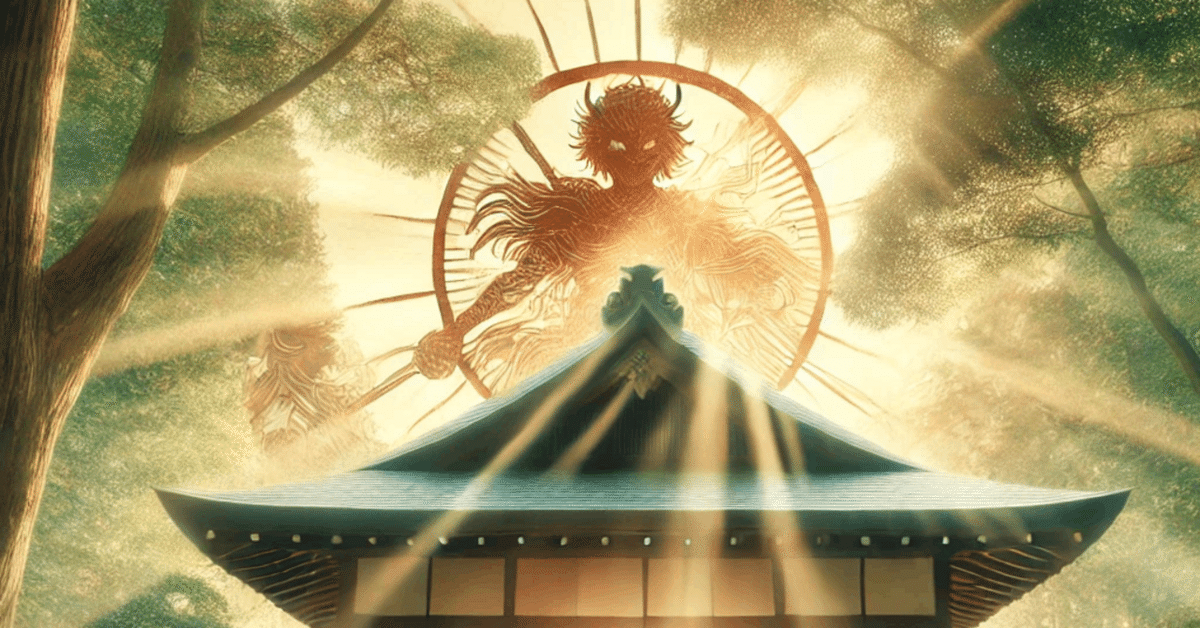
Demon Slayer~ The Mythological Roots of Sun Breathing and the Hashira【1】
Several months have passed since the airing of the Hashira Training Arc in Demon Slayer, and fans are eagerly awaiting the release of the Infinity Castle Arc movie. Recently, I had a conversation with a friend from overseas that gave me new insights into the cultural depth of the series. My friend remarked, "The heroes in Demon Slayer have a unique charm that sets them apart from American comic book heroes, and both are interesting in their own way." I agreed wholeheartedly, explaining that Demon Slayer is deeply rooted in Japanese culture and religion, which gives it a distinct flavor compared to other comics from different parts of the world.
During the conversation, my friend asked, “What specific cultural and religious aspects are incorporated into the story?” I explained the connection to Shintoism, but I realized I hadn’t thought about it in depth before. So, I decided to take this opportunity to delve into the cultural and religious elements, particularly Shintoism, in Demon Slayer, and write this analysis article.
In this article, we’ll explore how Demon Slayer is influenced by Japanese mythology and Shintoism, focusing on key elements like "Sun Breathing" and the "Hashira." We will examine how these concepts are connected to Japanese gods and reveal the deeper cultural significance behind the story.
Part 1: How Demon Slayer Connects to Japanese Mythological Gods and Shintoism
Demon Slayer has captivated audiences with its intense action scenes and compelling characters. However, beneath the surface, the series is deeply influenced by Japanese cultural traditions, especially Japanese mythology and Shintoism. In this first section, we’ll explore the connection between "Sun Breathing" and Amaterasu, and the significance of the Hashira as symbolic figures in Shintoism.
1. How Sun Breathing in Demon Slayer Connects to the Sun Goddess Amaterasu
In Demon Slayer, "Sun Breathing" is one of the most iconic and powerful techniques. This technique, passed down through Tanjiro’s family as the "Hinokami Kagura" (Dance of the Fire God), is deeply tied to the power of the sun. In Japanese mythology, this power is symbolized by Amaterasu, the sun goddess.
Amaterasu, the sun goddess, represents the source of light and life and is responsible for purifying the world of evil.
In Demon Slayer, demons are vulnerable to sunlight, and the sun’s power is crucial to defeating them. This parallels Amaterasu’s ability to cleanse the world with her light.
Tanjiro’s journey to master Sun Breathing represents:
The inheritance of divine power by humans.
A mythological quest to fight against darkness and evil forces.
As Tanjiro grows and hones his skills, he embodies the role of a warrior of light, much like Amaterasu’s role in Japanese mythology. His battles are not just physical but spiritual, reflecting themes of personal growth and selfsacrifice.
2. The Hashira: DivineLike Figures in Demon Slayer and Their Connection to Shintoism
The Hashira in Demon Slayer are the elite warriors of the Demon Slayer Corps, serving as the backbone of the organization. The term "hashira" (meaning "pillar") holds deep significance in Shintoism, where gods are often referred to as "Hashira" of the natural and spiritual world.
In Shintoism, gods are referred to as "Hashira", representing their role in maintaining balance and harmony.
For example, Amaterasu and other significant deities are counted as "Hashira" within the Shinto pantheon.
The Hashira in Demon Slayer are portrayed as more than just warriors:
Each Hashira possesses unique abilities, just as Shinto gods are responsible for different aspects of life (e.g., agriculture, war, the sea).
Together, the nine Hashira form a collective force, much like the eight million gods (Yaoyorozu no Kami) in Shintoism, who work together to protect nature and humanity.
Their strength, courage, and spiritual power make the Hashira resemble divine figures, similar to the gods in Shintoism who maintain order in the world.
3. The Role of Nature in Demon Slayer and Its Connection to Shintoism
One of the fundamental beliefs of Shintoism is that gods reside in nature. Mountains, rivers, trees, and other elements of nature are considered sacred, and gods are believed to dwell within them. This reverence for nature is a central theme in Demon Slayer.
Tanjiro’s training often takes place in natural environments, and his strength and spiritual growth are nurtured by his connection to nature.
Techniques like Water Breathing and Wind Breathing reflect the power of natural elements, emphasizing the characters’ bond with the natural world.
The Hashira, too, train and grow in harmony with nature, reflecting the Shinto belief in coexisting with the natural world. Their battles are not for personal gain but to maintain the balance between humanity and nature, much like the role of Shinto gods in preserving the natural order.
Conclusion and Next Article Preview
Demon Slayer is rich with elements drawn from Japanese mythology and Shintoism, especially in the concepts of "Sun Breathing" and the Hashira. The power of the sun, represented by Amaterasu, plays a key role in defeating demons, while the Hashira are depicted as divinelike figures, protecting humanity much like Shinto gods maintain balance in the world. The recurring theme of reverence for nature further solidifies the connection between Demon Slayer and Shinto spirituality.
In the next article, we will dive deeper into the different breathing techniques used by the Demon Slayer Corps and explore their connections to Japanese gods and shrines. By examining these techniques through the lens of Japanese mythology, we’ll reveal even more layers of depth in the story.
